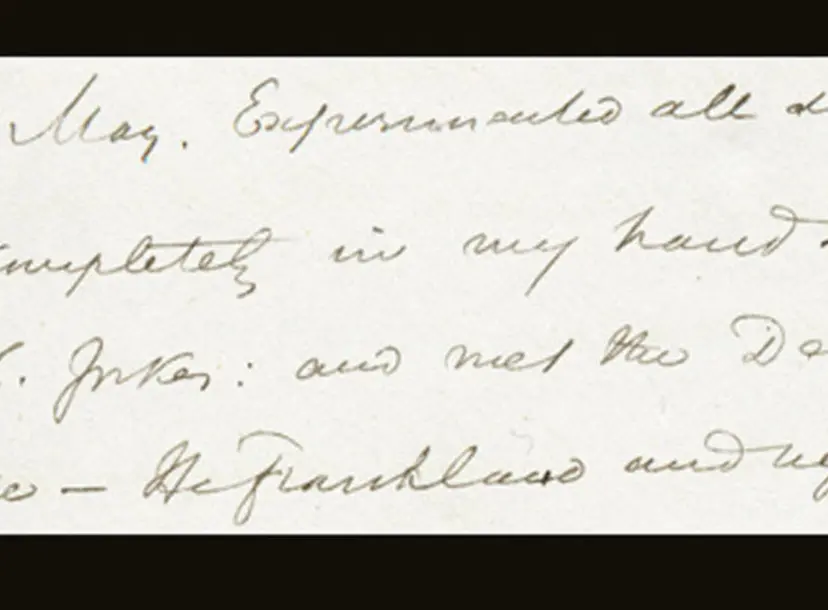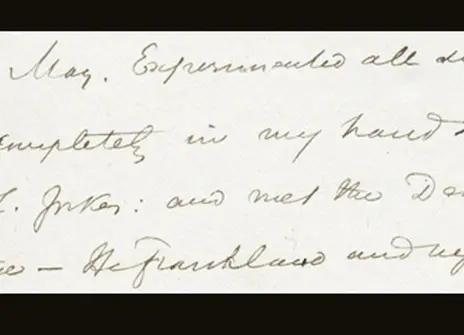On 18 May 1859, the Irish physicist John Tyndall wrote in his journal ‘the subject is completely in my hands’. This is no cryptic note. Just nine days earlier he had set up his complex and clever new apparatus at the Royal Institution in London to try to detect the absorption of heat by gases. Now, he had done it. And as far as he knew, no-one had done it before him.

Tyndall soon established that carbon dioxide and water vapour were among the gases that absorbed heat, and also that they radiated heat, the physical basis of the greenhouse effect. In making these discoveries, Tyndall set the foundation for our modern understanding of the greenhouse effect, climate change, meteorology, and weather.
But, had he ‘discovered’ the greenhouse effect? And was he the first?
Well, yes and no. To both questions.
The 'greenhouse effect' is responsible for the fact that our planet is warmer than it would be without an atmosphere. It makes the Earth habitable for life. Its operation is simple in principle. Heat, originally from the Sun, is radiated from the surface of the earth and absorbed by gases such as carbon dioxide and water vapour. Those in turn radiate heat themselves. That results in an increase in the average temperature of the surface and the atmosphere above what it would otherwise be.
What Tyndall had demonstrated unambiguously, and indeed for the first time, was the absorption and radiation by certain gases of what we now call long-wave infrared radiation. He had demonstrated the physical basis of the greenhouse effect. And he knew what he had shown. He wrote: "Thus the atmosphere admits of the entrance of solar heat; but checks its exit, and the result is a tendency to accumulate heat at the surface of the planet".
He also realised the implications for understanding climate, writing: "if, as the above experiments indicate, the chief influence be exercised by aqueous vapour, every variation of this constituent must produce a change of climate. Similar remarks would apply to the carbonic acid [carbon dioxide] diffused through the air". And he went on: "Such changes may in fact have produced all the mutations of climate which the researches of geologists reveal".

However, the actual existence of a greenhouse effect was already known.
In 1824, Joseph Fourier had written that "the temperature [of the Earth] can be augmented by the interposition of the atmosphere, because heat in the state of light finds less resistance in penetrating the air, than in repassing into the air when converted into non-luminous heat". And in 1836, Claude Pouillet had written: "the atmospheric stratum…exercises a greater absorption upon the terrestrial than the solar rays".
Tyndall acknowledged the work of both of them. What he had done was to detect and explain the physical basis of the process, and identify gases responsible.
But was he even the first to do this?
In recent years it has become apparent that an American woman, Eunice Foote, made a similar discovery in 1856, three years before Tyndall. Her experimental set-up is crude compared to Tyndall’s, and it is not easy to assess exactly what she measured or understood. Nevertheless, her experiments did provide evidence of the absorption of heat by carbon dioxide and moist air.
In addition, Foote had the insight to suggest, three years before Tyndall, that changing amounts of carbon dioxide and water vapour in the atmosphere could change the climate. As far as we know, she was the first person to do that. However, she did not differentiate between heat from the whole solar spectrum and what we now call long-wave infrared. It is the latter that is responsible for the greenhouse effect.
Foote did not give any clear explanation of the greenhouse effect. She may have unwittingly detected it, through her experiments in the 'shade', but as she made no comment on those results we can only surmise that she didn’t recognise what might be the cause of them. Tyndall, using long-wave infrared radiation, measured, understood and explained the greenhouse effect in terms of the absorption and radiation of heat by gases including carbon dioxide and water vapour in the atmosphere.
Retrospective claims of priority for Foote and Tyndall have become something of a cause celèbre. It has been claimed that Tyndall must have known of her work, and deliberately suppressed it, though there is no positive evidence that he did.
What is clear is that our understanding of the greenhouse effect, its mechanism, and its implications, rest on many shoulders. That history includes Fourier, Pouillet, Foote and Tyndall, in addition to Svante Arrhenius, who calculated in 1896 the temperature rise in the atmosphere that would be caused by a doubling of carbon dioxide levels, and Guy Callendar, who showed in 1938 that human activity was responsible for increasing carbon dioxide levels, and hence of potential climate change.
Now, thousands of scientists worldwide work on refining our knowledge, and publishing their collective findings and conclusions in the reports of the Intergovernmental Panel on Climate Change. We have come a long way since the 1850s, even if the practical challenge, of how to respond politically to the unambiguous message of human-induced climate change, remains huge.
This blog post was written by Roland Jackson, trustee of the Royal Institution and author of 'The Ascent of John Tyndall'.
This blog was first published in May 2019, but has been updated in November 2022.

